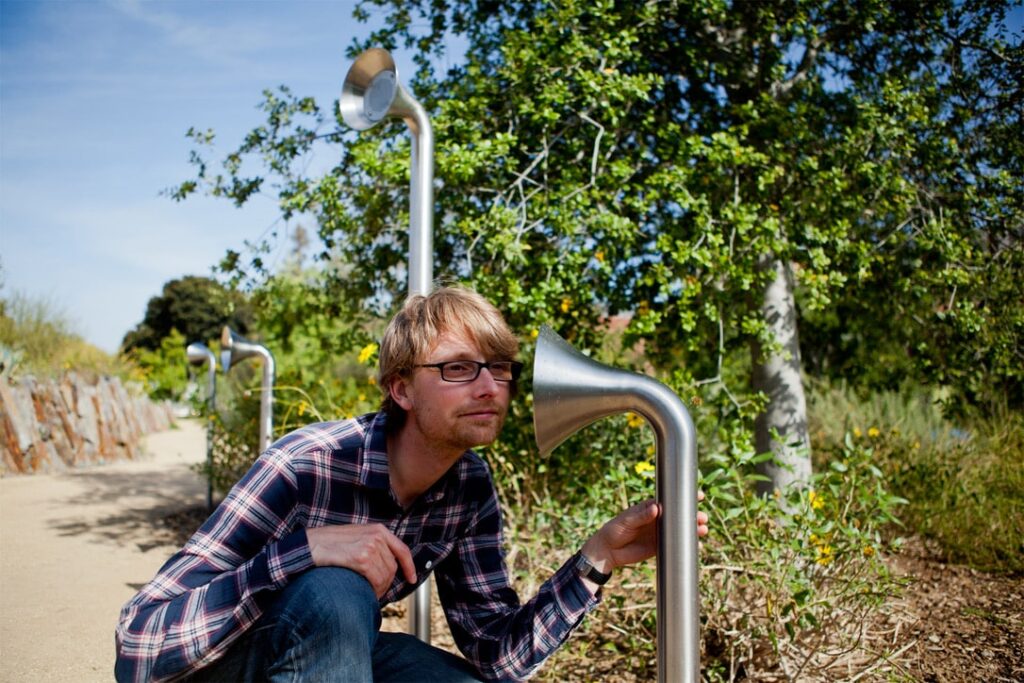About
Listening to trees offers an immersive exploration of one of nature’s most treasured creations. Using highly sensitive microphones which are linked to headphones hanging from tree branches, it is possible to discover a whole new side to nature.
Be amazed as you hear the deep rumbling of a tree’s vibrations and the quiet popping sounds of water passing through the xylem cells. This movement is crucial to a tree’s survival, much like blood flowing through human veins.

Why is tree listening important?
Tree listening is important because it is a powerful tool for education, conservation, and connecting with nature. Learning about the world around us helps us to understand it, our place within it, and how to protect it.
- Education: learning about trees introduces us to the fascinating world of natural science. This helps us to appreciate the beauty and complexity of the world and the interconnectedness of living things.
- Conservation: trees provide us with oxygen and are crucial to our survival. By learning
more about them we are better equipped to protect the planet and our futures. - Connecting to nature: spending time outdoors is proven to benefit wellbeing. It encourages calmness, joy and creativity.
Why are trees important?
As the largest plants on our planet, trees are a vital part of our ecosystems. They provide habitats for a whole host of wildlife, including birds, insects, plants and mammals. They also absorb carbon dioxide, a major greenhouse gas, and store carbon, helping to mitigate climate change.
Trees are crucial to human survival, as they transform carbon dioxide into oxygen through photosynthesis. They trap air pollutants in their bark helping us to maintain better respiratory health.
Trees are also important in storing and distributing water. This prevents flooding and erosion, whilst maintaining rich, fertile soil for growing food. What can I hear when I listen to trees?
When we listen to what is happening inside a tree, much of it is to do with the movement of water. Water sustains the tree by supplying the leaves with the essential moisture needed to produce sugar for nourishment. It also serves as a cooling system on hot, sunny days.
As the leaves lose water through evaporation, they need to be rehydrated. Water molecules inside the tree cling together and form a water chain – called xylem – from the roots to the leaves, to make this movement of water possible.
When leaves lose more water than the roots and water columns can supply, air is drawn into the xylem. If this air mixes with water inside the tree it creates a popping sound. This is part of what we can hear at our tree listening workshops.
Where did tree listening come from?
Listening to the rustle of the wind through the leaves, or the creaking of branches, is a practice as old as human existence. However, listening to what happens inside a tree is a new development.
Thanks to modern technology and the creative imagination of Alex Metcalf, tree listening has been possible since 2007. The project was inspired by Alex’s Masters in Design Products at the Royal College of Art.
Since then, the groundbreaking project has caught the attention of scientists, artists and members of the public from around the world.
Discover more about tree listening.
Want to learn more about what sound a tree makes, or to try it out for yourself? Our pop-up tree listening workshops travel around the globe and we also have a permanent exhibition in the Natural History Museum in LA.
If you would like to get in contact please do email hello@treelistening.co.uk
